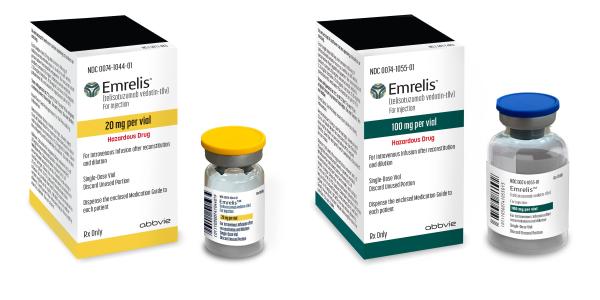Telisotuzumab vedotin Disease Interactions
There are 4 disease interactions with telisotuzumab vedotin.
Telisotuzumab vedotin-tllv (applies to telisotuzumab vedotin) hepatic dysfunction
Moderate Potential Hazard, Moderate plausibility. Applicable conditions: Liver Disease
Telisotuzumab vedotin-tllv has not been studied in patients with moderate or severe hepatic dysfunction.
Telisotuzumab vedotin-tllv (applies to telisotuzumab vedotin) interstitial lung disease or pneumonitis
Moderate Potential Hazard, Moderate plausibility. Applicable conditions: Interstitial Pneumonitis
Interstitial lung disease or pneumonitis has occurred in patients treated with telisotuzumab vedotin-tllv. Patients should be monitored for new or worsening respiratory symptoms.
Telisotuzumab vedotin-tllv (applies to telisotuzumab vedotin) peripheral neuropathy
Moderate Potential Hazard, Moderate plausibility.
Peripheral neuropathy, including peripheral sensory neuropathy and peripheral motor neuropathy has occurred in patients treated with telisotuzumab vedotin-tllv. Patients should be monitored for signs and symptoms of new or worsening peripheral neuropathy such as hypoesthesia, hyperesthesia, paresthesia, a burning sensation, neuropathic pain, or muscle weakness.
Telisotuzumab vedotin-tllv (applies to telisotuzumab vedotin) renal dysfunction
Moderate Potential Hazard, Moderate plausibility.
Telisotuzumab vedotin-tllv has not been studied in patients with severe renal dysfunction, and end-stage renal disease with or without dialysis.
Switch to professional interaction data
Telisotuzumab vedotin drug interactions
There are 383 drug interactions with telisotuzumab vedotin.
More about telisotuzumab vedotin
- telisotuzumab vedotin consumer information
- Check interactions
- Compare alternatives
- Side effects
- Dosage information
- During pregnancy
- Drug class: miscellaneous antineoplastics
- En español
Related treatment guides
Drug Interaction Classification
| Highly clinically significant. Avoid combinations; the risk of the interaction outweighs the benefit. | |
| Moderately clinically significant. Usually avoid combinations; use it only under special circumstances. | |
| Minimally clinically significant. Minimize risk; assess risk and consider an alternative drug, take steps to circumvent the interaction risk and/or institute a monitoring plan. | |
| No interaction information available. |
See also:
Further information
Always consult your healthcare provider to ensure the information displayed on this page applies to your personal circumstances.


